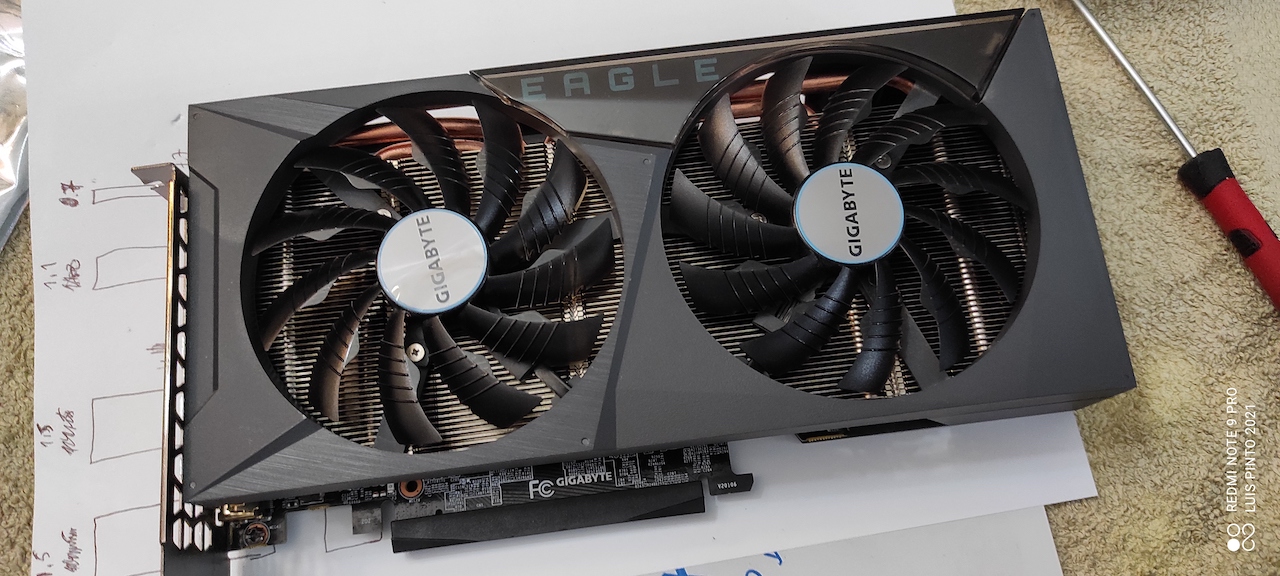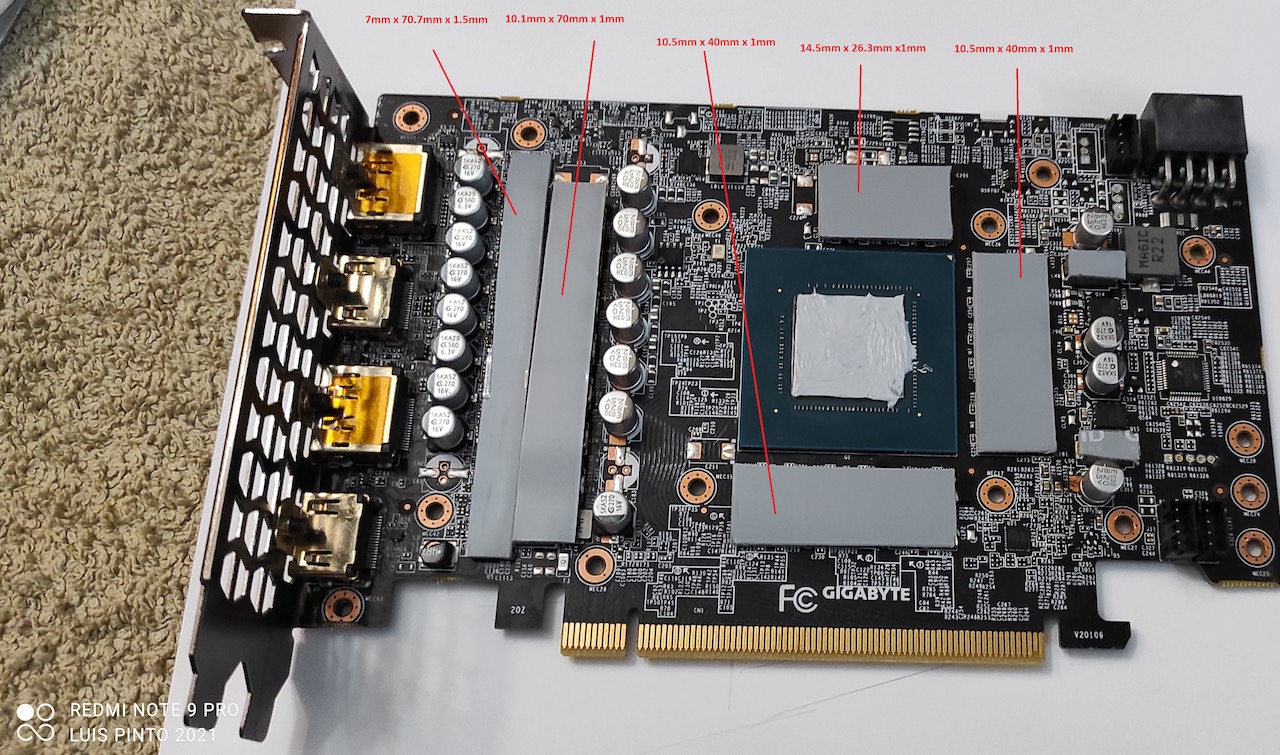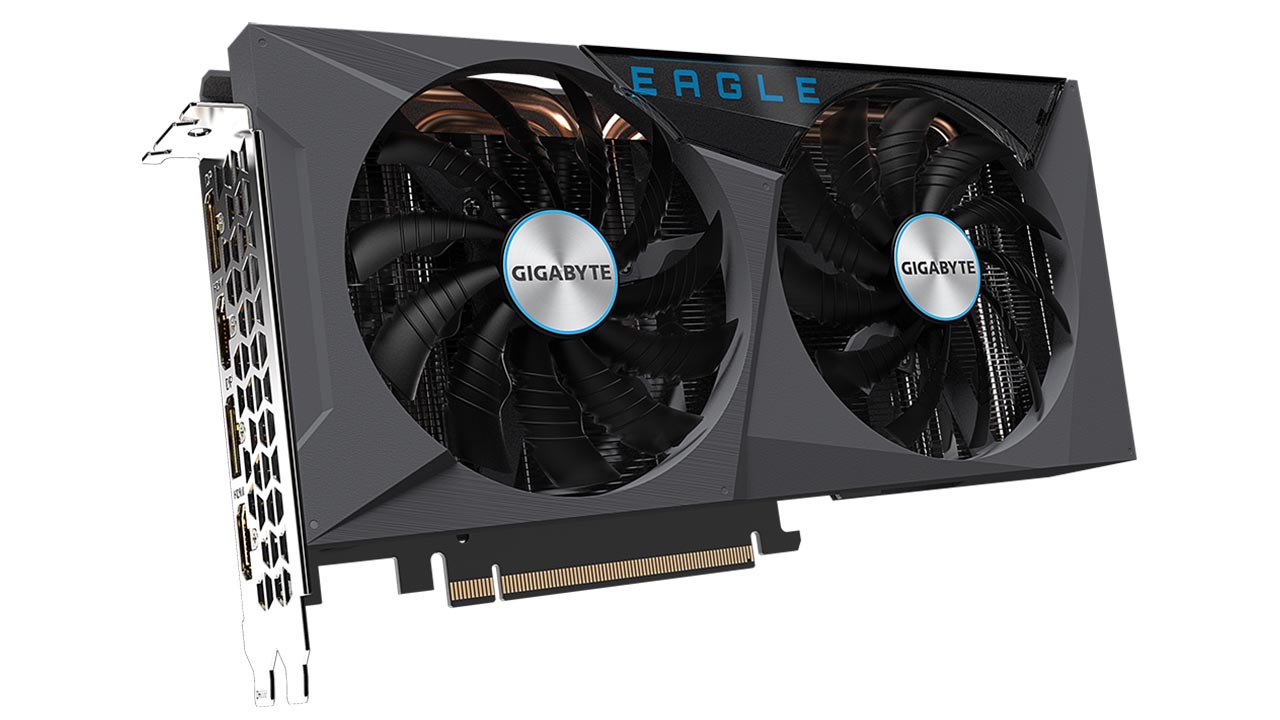Sizes guide
- The scrissor sign next to a size means it can be cut out from that slice of thermal pad. It is not the actual size! Example: 80x40x2mm
- One dimension size means it’s the thickness of that pad. Example: 1mm
- Two or three dimension sizes – with no scrissor sign – means it’s most probably an actual size. Example 100x14x1.5mm
About sizes
Sizes you find here come from various sources. Most of them reported by my clients whom successfully replaced their GPUs’ factory thermal pads with high quality aftermarket pads – getting significant results in their temperature drop. Some of these sizes are actual measurements and others just collected from random users on such websites like Reddit, YouTube or official / unofficial forums.
Do your own research
Please note that I cannot take any responsibility for the sizes appearing here. Do your own research as well before buying and replacing anything.
Tips
- Make sure your pads and GPU die contacts well with the heatsink.
- Always test your graphic cards and devices in controlled environment.
 English
English  Magyar
Magyar


vavanjukebox
In fact, I had only bad temperatures with 1mm on memory chips and GPU also. With 0,5mm, it’s very good.
FrankyDeLuna
You used 0,5mm for all the pads on this card ?
benny
i already try to 0.5 mm but still reach 75-80 degree with fan 70-75%
Ray
All thicknesses of thermal pads listed above needs to be reduced by 0.5mm (1.5mm to 1mm and 1mm to 0.5mm) Vram almost immediately throttled when I followed the guide. Vram temps were significantly better when I used 0.5mm thermal pads for everything but the 7mm by 70.7mm section where I used 1mm pads.
Augusto
DId you use gelid ou thermalright?
Jobeefus
What are you using to check vram temps? It is not present in HWinfo for this card.
Marco
I recommend 0.5mm Gelid and 1mm Artic Pads on the side. I tried 1mm and 1.5mm and it got worse( Artic ).
Gelid
bitvadasz
The 1mm Arctic thermal pad is too thick. You can’t press it enough so that the cooler can sit properly on the gpu chip! Since 0.75 mm cannot be purchased, I implemented the following solution. I used Arctic 0.5mm, which I put on the cooler. I applied a thin layer of Arctic MX-5 thermal paste on top of Vram chips. After that, I connected it to the cooler. I checked and the paste ran out in a nice even thin layer on the side of the chips. I know it’s not the best solution, but in this case I couldn’t solve it any other way. There were no overheating problems in either the vram or the gpu.
bitvadasz
The 1mm Arctic thermal pad is too thick. You can’t press it enough so that the cooler can sit properly on the gpu chip! Since 0.75 mm cannot be purchased, I implemented the following solution. I used Arctic 0.5mm, which I put on the cooler. I applied a thin layer of Arctic MX-5 thermal paste on top of Vram chips. After that, I connected it to the cooler. I checked and the paste ran out in a nice even thin layer on the side of the chips. I know it’s not the best solution, but in this case I couldn’t solve it any other way. There were no overheating problems in either the vram or the gpu.
Joseph
i messed with mine and i wish i didnt, it overheat and crash instantly. i’ve orderd one thermalright 1.0 mm and 0.5mm also thermal grizzly Kryonaut. hopefuly it get back toghter in one safe and non-overheating piece.
Helton Rosa
Thank you very much for this post. Very Usefull for me.
drewidd
I tried gelid 1mm on all of the card, it overheated when loading games.
I have now ordered .5mm will put it everywhere bar the above 1.5 mm. which I will leave at 1mm.
will update.